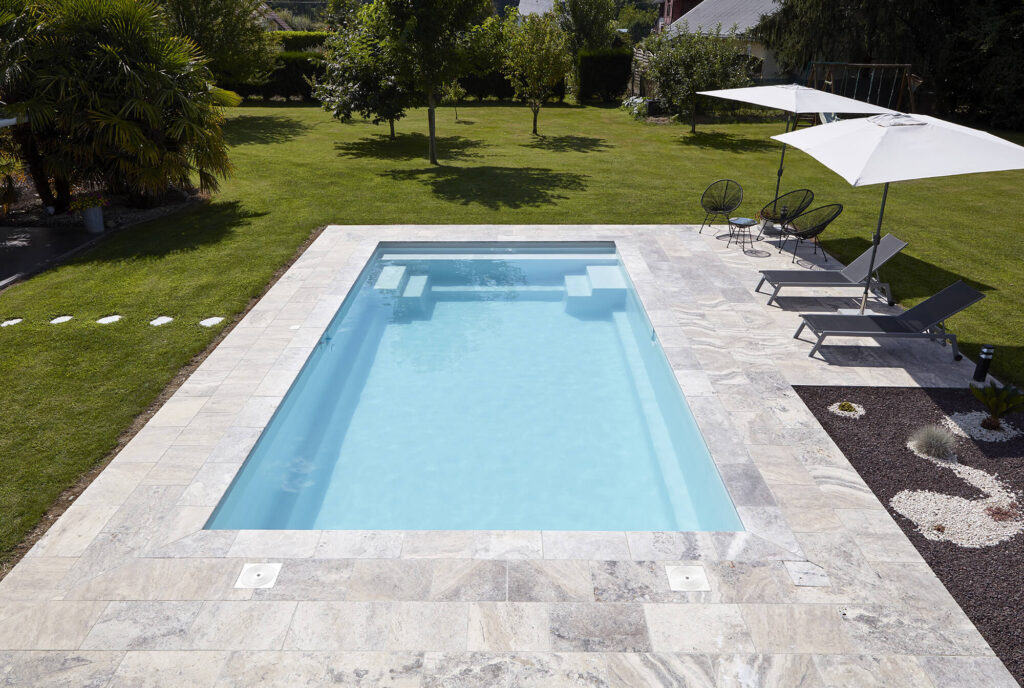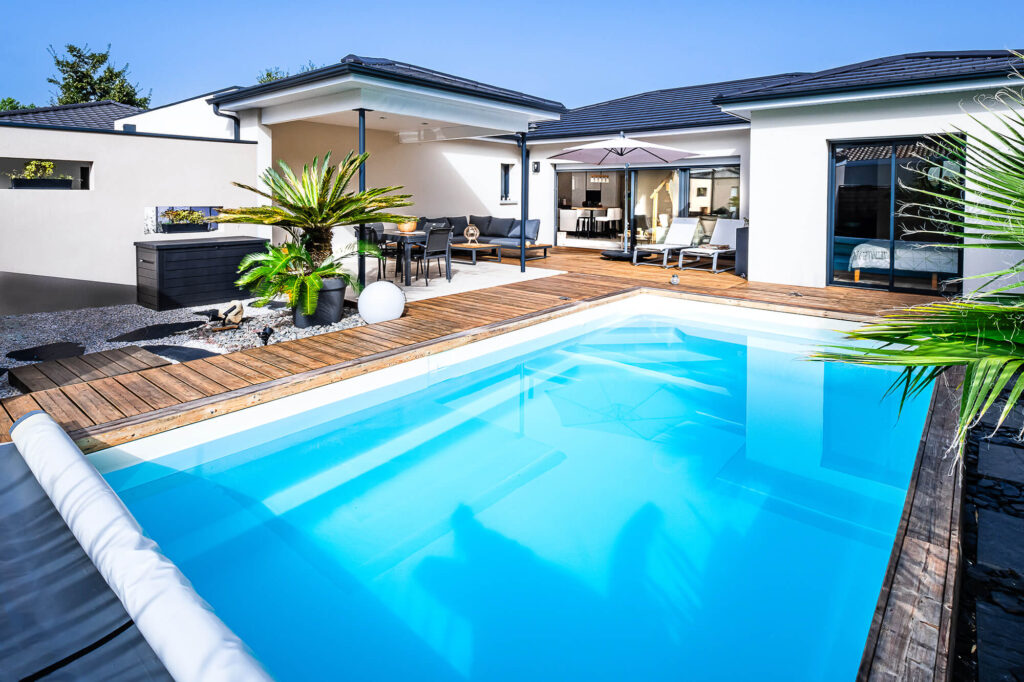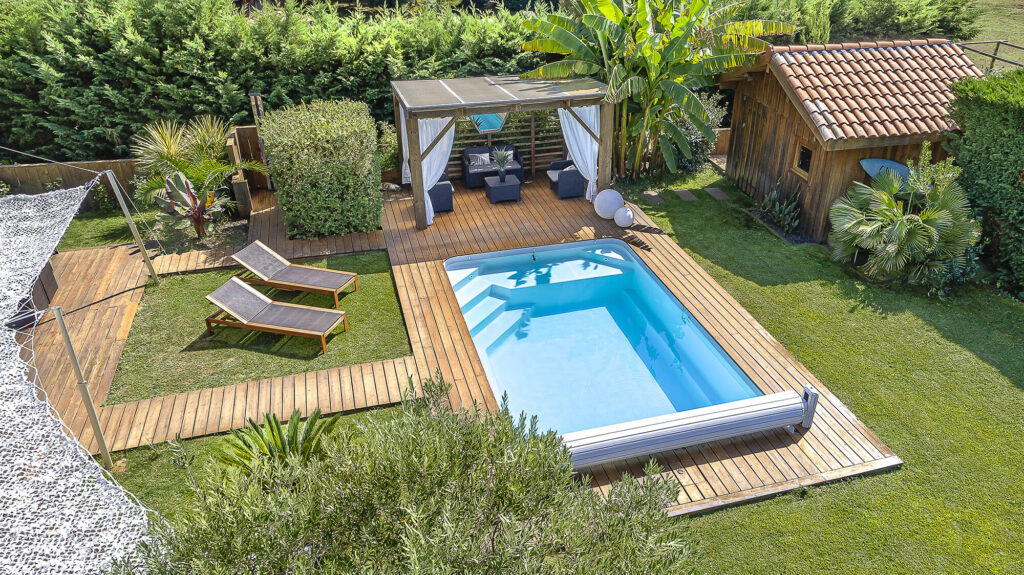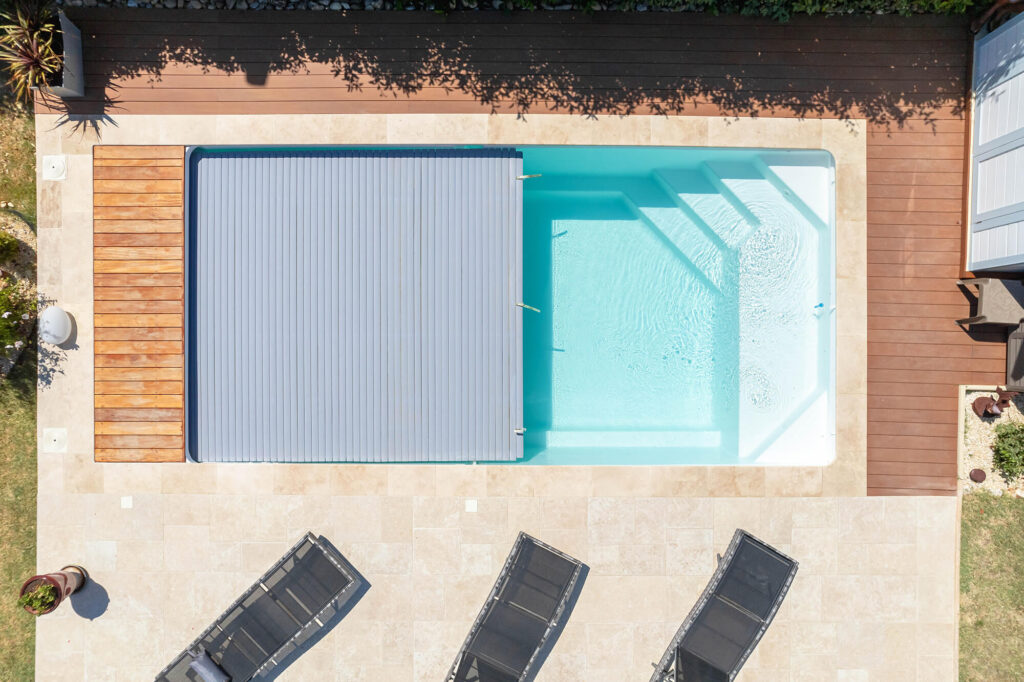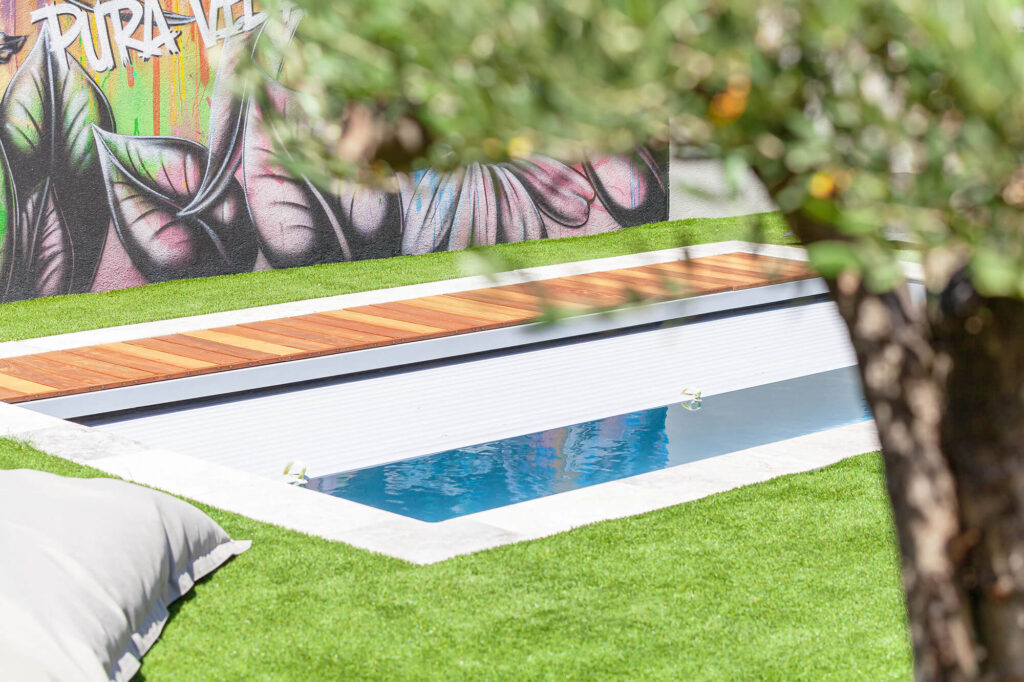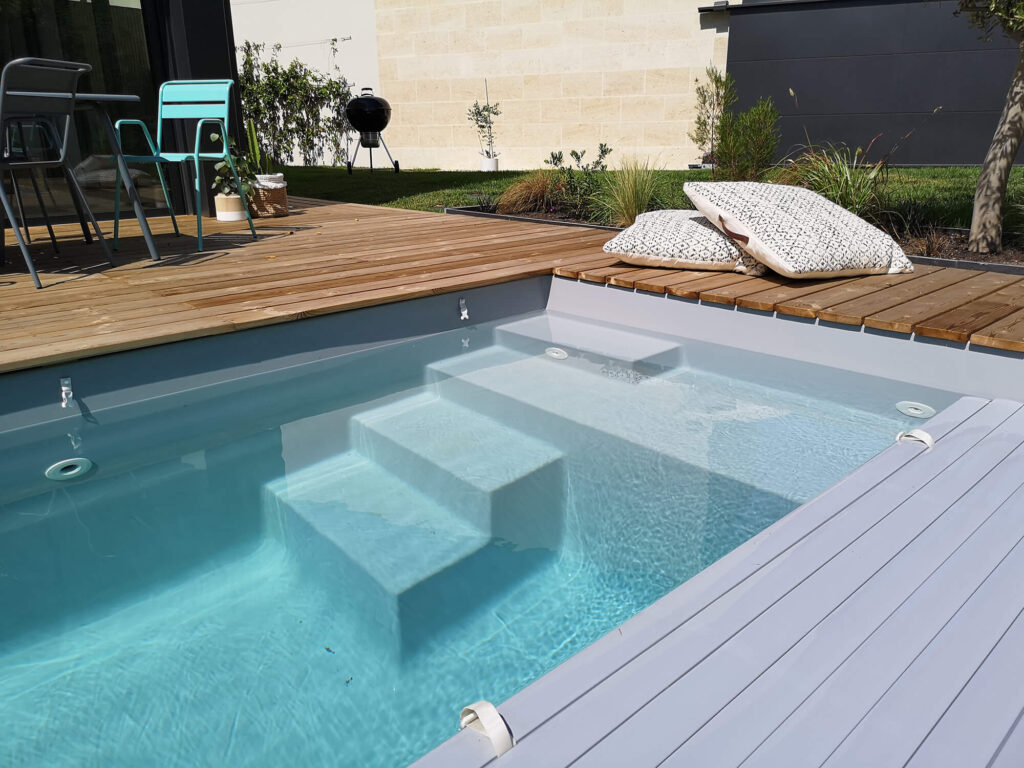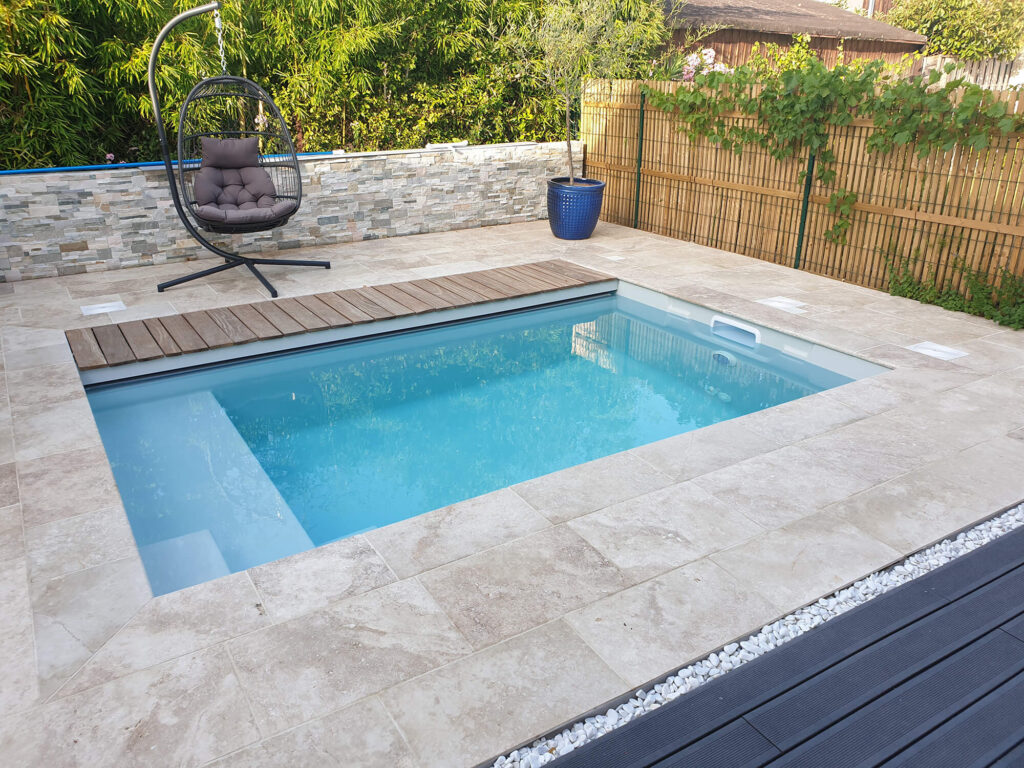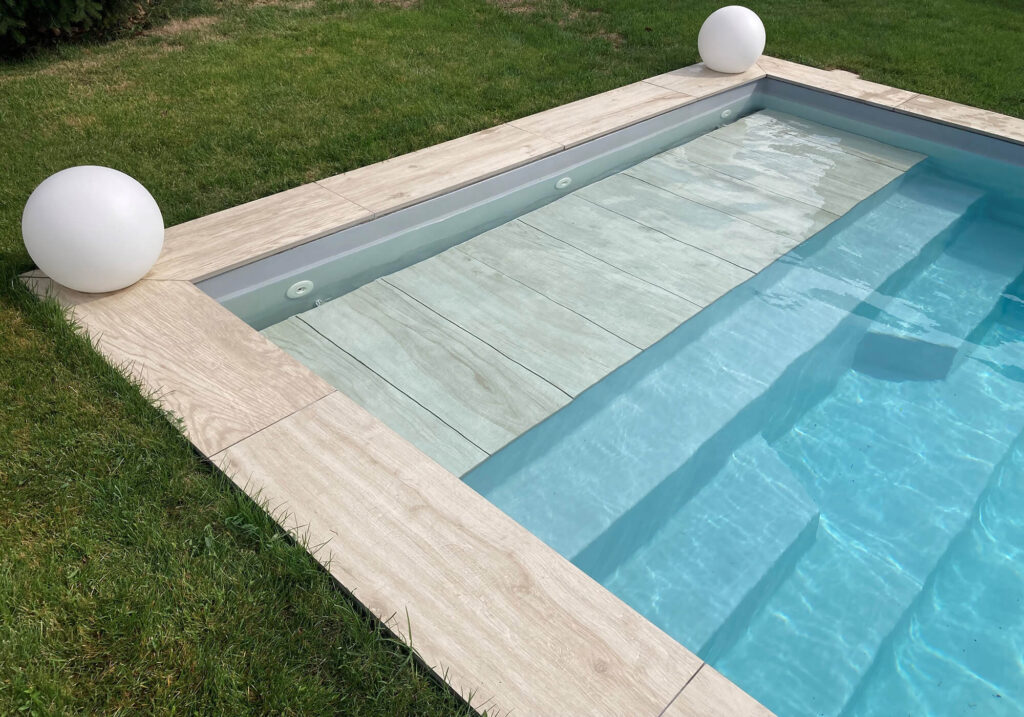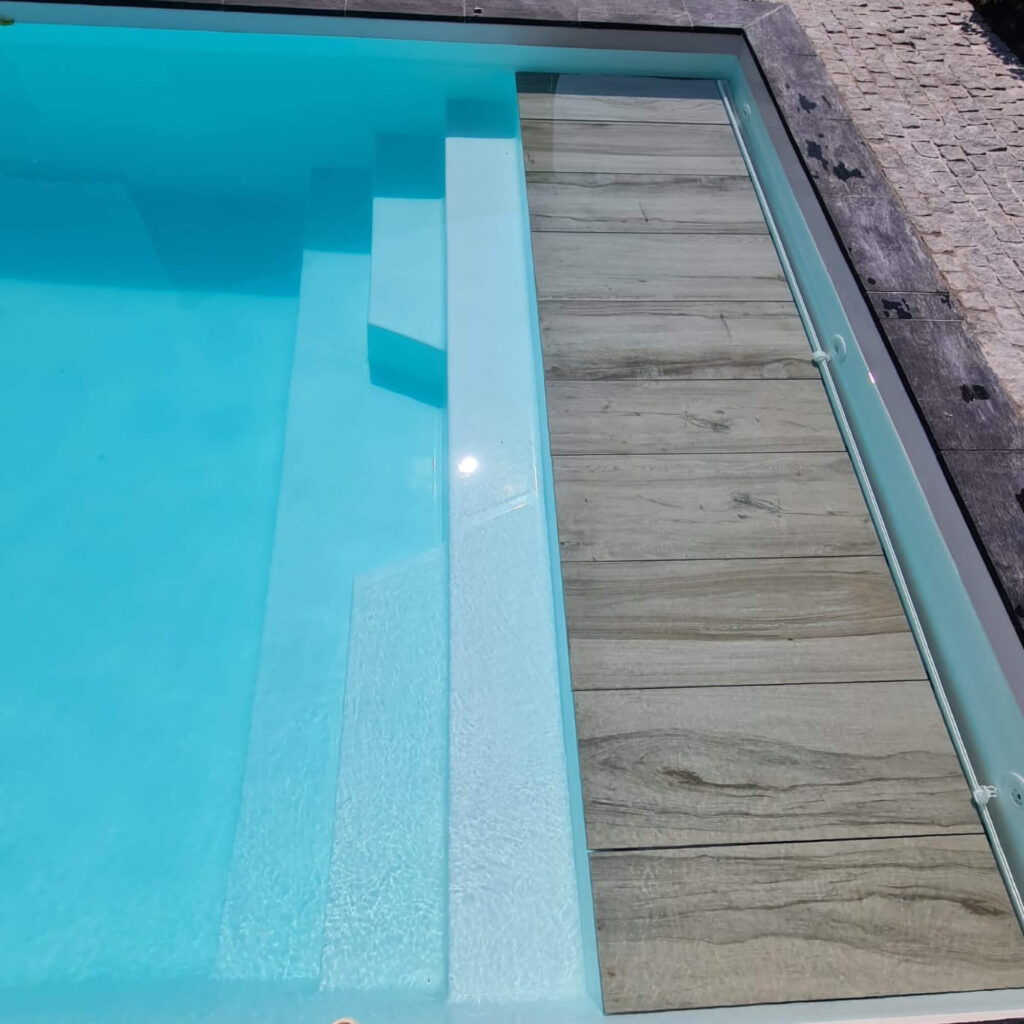The polyester shell pool , increasingly popular for its speed of installation and relatively simple maintenance, attracts many owners wishing to enjoy a durable and aesthetic pool . However, a question often comes up among future buyers: what is the lifespan of a polyester shell pool?
To answer this question, it is essential to take into account several factors such as maintenance, use but also environmental conditions.
What factors influence the lifespan of a shell pool?
The lifespan of a polyester shell pool is generally estimated at between 20 and 30 years, or even more, provided that it is maintained rigorously and that quality products are used.
1. Hull quality
The quality of the shell is essential to ensure the longevity of your pool. High-quality shells are made from layers of resin and robust fiberglass , offering optimum resistance to the elements and wear. Other materials, such as acrylic , are also used for the manufacture of shell pools. Each material has specific characteristics in terms of strength, aesthetics and durability, which can influence the choice according to individual needs and preferences.
When purchasing, choose recognized manufacturers to guarantee a durable hull.
2. Professional installation
Proper installation is essential to prevent structural problems and extend the life of your pool .
Use qualified professionals to ensure a proper installation, including proper ground preparation and precise hull placement.
3. Regular maintenance
These shells are protected by a finishing gel coat that guarantees the watertightness of the pool, a composite material specially designed to withstand wear and tear over time. In addition to being easy to maintain, it is very resistant. Unlike the liner that covers concrete structures, the coating of the polyester shell pool is not likely to become punctured as the pool is used.
Although they are particularly strong and resistant, the hull materials require adequate care to maintain their properties.
Therefore, regular maintenance is crucial to keep the shell in good condition and extend its lifespan. This includes regularly checking your pool water , cleaning the bottom of the pool, and maintaining the filtration system .
The pool water is cloudy, what should I do?
Despite the care given to your pool, the water can sometimes become cloudy. However, green or cloudy water can cause significant damage to the shell of a pool if left untreated.
Discover our tips for restoring clear, balanced water to preserve the integrity of your pool.
Why is the pool water cloudy?
When you notice cloudy pool water, what should you do ? First, it is important to quickly identify the cause to restore water clarity. There are several reasons why this may occur:
- pH Imbalance : A pH that is too high or too low can cause water to appear cloudy. The ideal pH level is between 7.2 and 7.6.
- High or low chlorine levels : Too much or too little disinfectant can cause microorganisms to overgrow.
- Ineffective Filtration : Insufficient filtration time or a clogged filter can cause cloudy water.
- Water temperature : Water temperature that is too high can promote the proliferation of algae and bacteria.
- High limescale level : A high limescale level can make the water cloudy.
How to get clear water?
To restore clarity to your pool water , here are the steps to follow:
- Control and adjust pH : To control pH, use a test kit. If the pH is unbalanced, add a specific product to adjust the levels: pH regulators to increase or decrease the pH, as needed.
- Check Chlorine Level : Check chlorine levels regularly and add chlorine if necessary to maintain adequate levels.
- Clean the filtration system : A clogged sand filter or cartridge filter reduces filtration efficiency. Clean it frequently according to the manufacturer's recommendations.
- Perform shock treatment : In cases of high turbidity, shock treatment may be necessary to quickly eliminate contaminants.
- Use anti-algae and anti-scale products : These products help prevent and treat cloudy water problems by eliminating algae and preventing the formation of scale deposits.
Our additional tips for extending the life of your pool
To maximize the lifespan of your polyester shell pool , here are some additional maintenance tips to follow:
- Weather Protection: If possible, cover the pool when not in use to protect it from debris and weather.
- Hull Inspection: Regularly inspect the hull for cracks or damage. Prompt repair can prevent more serious problems.
- Cleaning the bottom of the pool: The bottom of the pool must be cleaned regularly to prevent the accumulation of dirt and debris which can damage the hull.
The lifespan of a polyester shell pool depends greatly on the maintenance and care given to the structure and water of the pool. By following rigorous maintenance practices and using suitable products to maintain the chemical balance of the water , you can enjoy your pool for many years.
When faced with common problems like cloudy water , don't wait to take action. Regularly check the water parameters, clean the filtration system, and use appropriate treatments such as anti-scale and anti-algae products . This will not only ensure healthy bathing water, but also help extend the life of your shell pool .
Configure your pool online Back to all news

